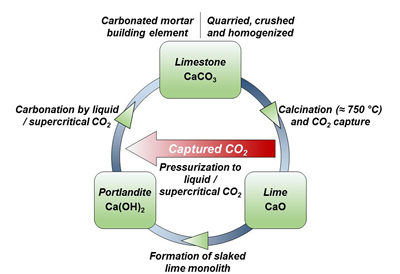CO2Concrete, an entity incubated at the University of California, Los Angeles, has changed its name to CarbonBuilt to better align with a mission to store significant amounts of carbon dioxide in concrete used for the built environment. Developed over the course of seven years at the UCLA Samueli School of Engineering-hosted Institute for Carbon Management, the CarbonBuilt Reversa platform spans…
Read MoreTag: UCLA
CO2Concrete rebrands as CarbonBuilt; propels curing, sequestering technology
Sources: CO2Concrete, Los Angeles; CP staff CO2Concrete, an entity incubated at the University of California, Los Angeles, has changed its name to CarbonBuilt to better align with a mission to store significant amounts of carbon dioxide in concrete used for the built environment.
Read MoreUCLA team demonstrates carbon dioxide recycling in precast production
A University of California, Los Angeles team in the final round of the $20 million NRG Cosia Carbon Xprize competition has scheduled a February 2020 demonstration of a process yielding concrete blocks or elements through capture of carbon dioxide gas in coal-fired power generation. Carbon Upcycling UCLA will stage the 30-day undertaking at the Dry Fork Station near Gillette, Wyo.; members see daily production of up to 10 tons of their CO2ncrete-trademarked units for use in wall construction.
Read MoreUCLA team demonstrates carbon capture in precast block production
Sources: University of California, Los Angeles; CP staff
A University of California, Los Angeles team in the final round of the $20 million NRG Cosia Carbon Xprize competition has scheduled a February 2020 demonstration of a process yielding precast concrete blocks with carbon dioxide gas from coal-fired power generation. Carbon Upcycling UCLA will stage the 30-day undertaking at the Dry Fork Station near Gillette, Wyo.; members see daily production of up to 10 tons of their CO2ncrete-trademarked units for use in wall construction.
Read MoreResearchers eye reverse calcination for reduced-carbon cement production
Targeting lower net carbon dioxide emissions in portland cement milling, University of California, Los Angeles researchers propose introduction of calcium hydroxide at the calcination phase, when high temperatures split limestone raw feed into CO2 gas and calcium oxide. Lab-scale tests in their National Science Foundation-backed investigation indicate the potential to sequester CO2 and recreate limestone in a continuous loop.
Read MoreResearchers eye reverse calcination for reduced-carbon cement production
Sources: University of California, Los Angles; CP staff
Targeting lower net carbon dioxide emissions in portland cement milling, University of California, Los Angeles researchers propose introduction of calcium hydroxide, or hydrated lime, at the calcination phase, when high temperatures split limestone raw feed into CO2 gas and calcium oxide. Lab-scale tests in their National Science Foundation-backed investigation indicate the potential to sequester CO2 and recreate limestone in a continuous loop.
Read More

